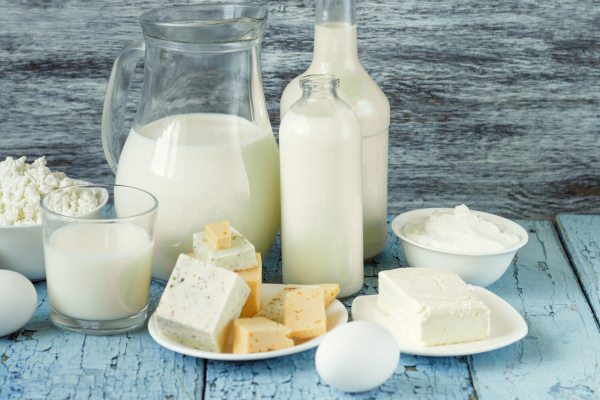Use of Preservatives in Milk and Dairy Products
Oct 17, 2023

What Are the Methods of Milk Preservation?
Milk is one of the most used foods in the world and contains numerous nutrients. It is therefore important for us to preserve milk and dairy products. Proper preservation of milk can extend its shelf life. The most frequently adopted methods of milk preservation are ultra-high-temperature treatment, sterilization, and pasteurization.
1. Treatment at Ultra-high Temperature
It is the most common method of preserving milk and milk products. It is achieved by cooling the milk at a temperature of 57 - 68 °C and then rapidly cooling it at <6 °C. This method is effective against bacteria that cause spoilage but does not eliminate some of the pathogens. This method is effective against the bacteria that cause milk spoilage but does not eradicate some of the pathogens. The primary purpose of ultra-high temperature treatment is to extend the shelf life of milk by decreasing the growing of cold-resistant bacteria.
2. Pasteurization
Pasteurization is a method of milk preservation. Its purpose is to eliminate pathogenic microorganisms existing in the milk product so as to prolong its shelf life without affecting the quality of the milk.
3. Sterilization
Sterilization is a type of dairy preservation method. It involves using heat to kill almost all bacteria in the product. Sterilized milk can be kept at room temperature without refrigeration for a longer period of time for safe consumption.
4. Use of Preservative Agents
The addition of milk preservatives is also helpful in suppressing the growth of microorganisms, thereby extending the shelf life of the product.
List of Common Milk Preservatives
Dairy products are important derivatives of milk and mainly consist of milk powder, ice cream, butter, and cheese. Preservatives are chemical additives that can be added in limited quantities to dairy products in order to inhibit the growth and multiplication of microorganisms, thereby extending the shelf life of the product. The main preservatives used in milk include natamycin, potassium sorbate, and sodium benzoate.

1. Potassium Sorbate E202
Potassium sorbate e202 is made by neutralizing sorbic acid and potassium hydroxide. It has all the basic properties of sorbic acid apart from its solubility. It is widely used as a preservative in dairy products. Potassium sorbate granular has the merit of strong inhibition of spoilage bacteria and molds, as well as good solubility and very low toxicity. Potassium sorbate natural plays an important role in ensuring the quality and safety of products.
2. Sodium Benzoate E211
Sodium Benzoate E211 is a food preservative made by mixing benzoic acid and sodium hydroxide. Benzoic acid is a good preservative on its own, so the combination of benzoic acid and sodium hydroxide further helps to improve the ability to suppress the growth of microorganisms. Sodium benzoate in milk and milk products can restrain the appearance and growth of potentially harmful bacteria, molds, and other microorganisms, resulting in the prevention of spoilage and decay of food products and the extension of their shelf life.
3. Natamycin E235
Natamycin is a natural and efficient inhibitor of yeasts and molds. Natacyn is active against almost all yeasts and molds, but has no bactericidal effect. Natacyn generic particularly plays an instrumental role in the surface treatment of dairy products such as cheese. Natacyn's harmlessness to humans and its low solubility allow it to be utilized as a surface preservative for dairy products.
The Bottom Line
Dairy products are highly nutritious but unstable substances with a short shelf life. Emulsifiers and preservatives in milk are highly significant in ensuring the quality of dairy products and extending their shelf life.
As a company specializing in food additives, we can provide a wide range of preservatives and related other food additives. And Chemsino can supply free samples and affordable prices and welcome future partners to inquire!
You Might Also Like
-

Distilled Monoglyceride(DMG) Powder E471 CAS NO. 31566-31-1
-

Emulsifier Tween 60 Powder Form For Cosmetics CAS NO.:900...
-

Organic Solvent Propylene Glycol CAS NO. 57-55-6
-

Elevating Bread Flavor, Texture And Shelf Life With DATEM
-

Free Samples CAS No. 31566-31-1 Distilled Monoglycerides ...
-

Sorbitan Esters Sorbitan Monolaurate(S-80): Enhancing Tex...
